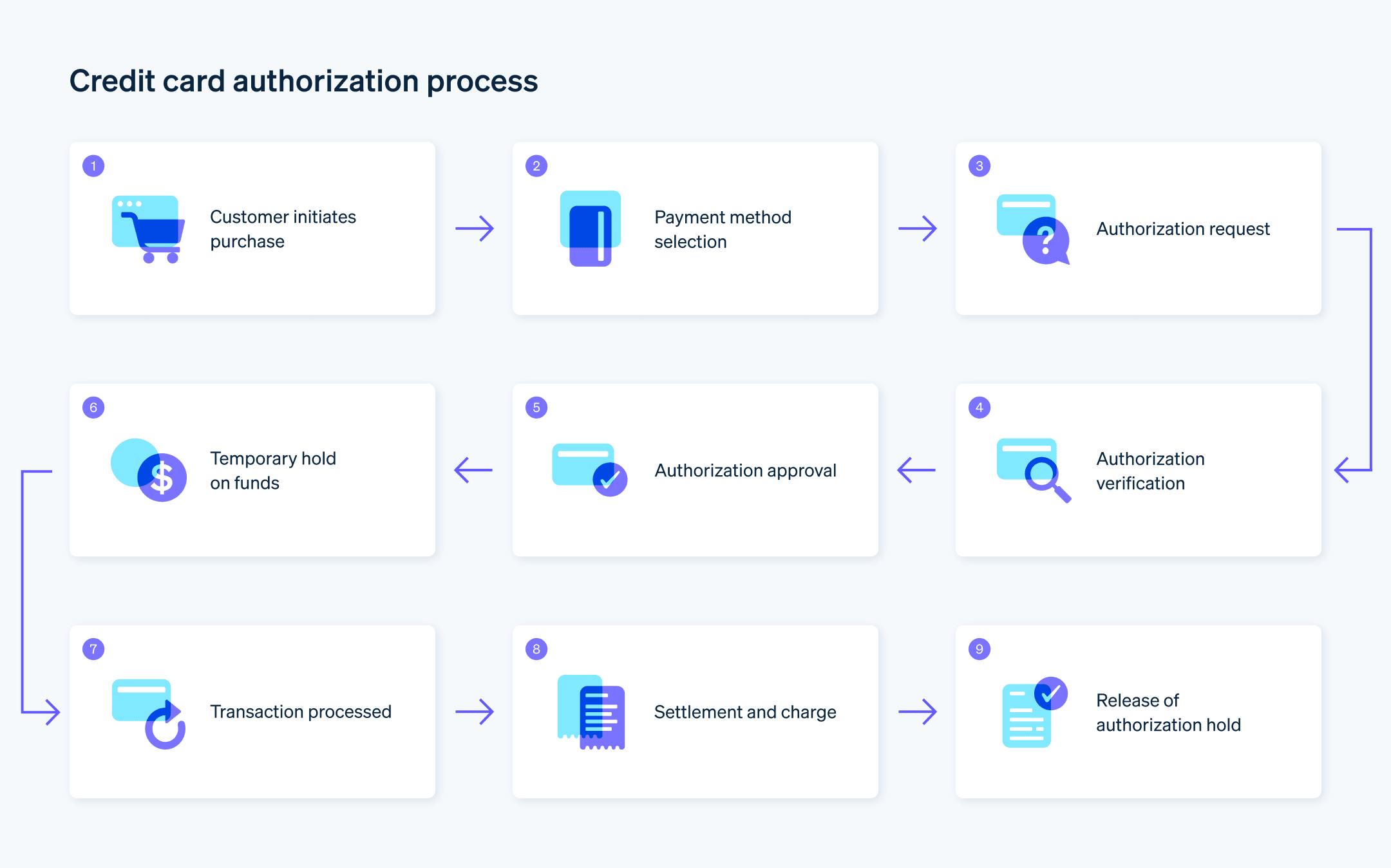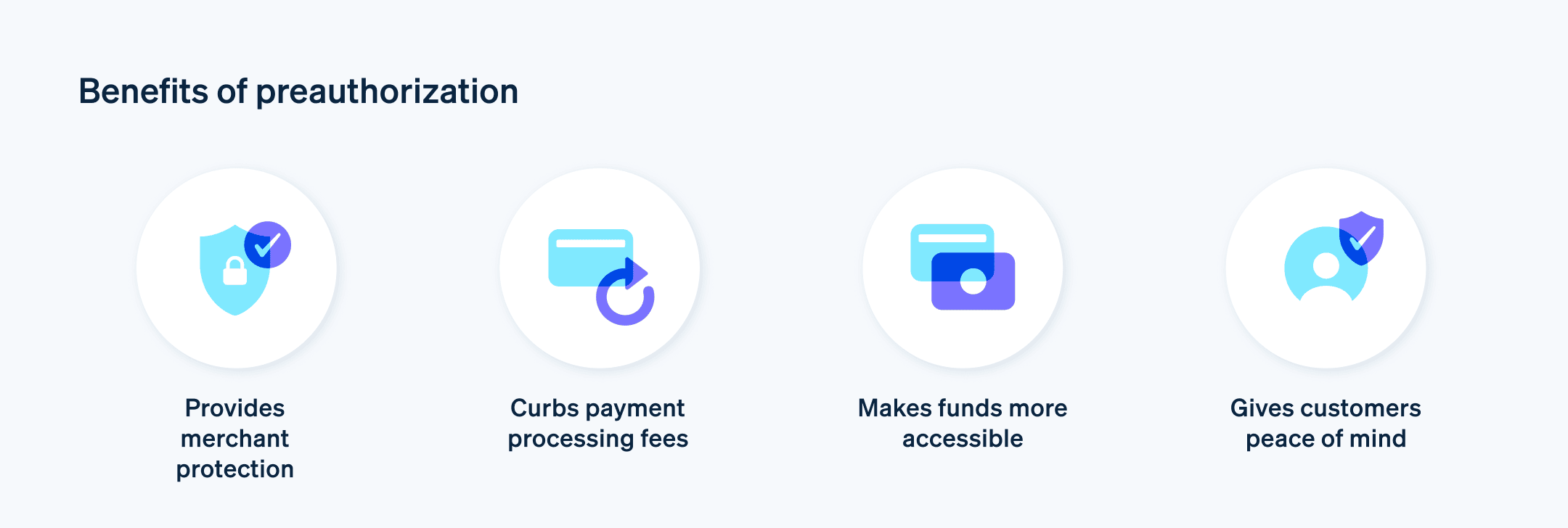A pre-authorisation charge is a temporary hold on a specific amount of the available balance on a credit or debit card. This charge checks that the card is valid and has sufficient funds to cover the transaction. The amount is set aside by the card issuer but not actually transferred to the business. This charge is typically used in situations where the final amount is not known at the time of the initial transaction, such as at hotels or petrol stations.
The pre-authorisation ensures that the business can later charge the actual transaction amount. Once the final amount has been assessed and charged, the pre-authorisation hold is released, and the actual amount is deducted from the account. If the purchase is not completed, the pre-authorisation amount is released back into the card's available balance after a certain period, which can vary depending on the card issuer's policies. This process is a standard practice to verify that a card is active and can cover the potential charges. According to a report from the Federal Reserve Bank of San Francisco, 31% of all payments in 2022 were made with credit cards, emphasising the importance for businesses to manage pre-authorisation charges diligently to ensure that customer transactions are covered.
Below, we'll discuss what businesses need to know about pre-authorisation holds. Although these charges may seem like a small detail, they have major implications for the efficiency of the payment experience and the security of payments as a whole.
What's in this article?
- How long does a pre-authorisation charge last?
- How do pre-authorisation charges work?
- Pre-authorisation charges and credit card transactions
- Advantages of using pre-authorisation charges
- What types of business typically use pre-authorisation charges?
How long does a pre-authorisation charge last?
A pre-authorisation charge on a credit or debit card typically lasts for about five to seven days, but this duration can vary depending on the card issuer's policies and the type of transaction. Some banks may keep the hold for up to 14 days. In the case of certain types of business, such as hotels and car hire companies, the hold might remain for an even longer period – potentially up to 30 days.
It's important to know that if the actual transaction is processed before the hold period ends, the pre-authorisation hold is removed and replaced by the actual charge. If the transaction doesn't go through, or if it's less than the pre-authorised amount, the hold is released. The unused funds then become available again in the cardholder's account. This timeline for the release of funds can also depend on both the business's and the card issuer's processing times.
How do pre-authorisation charges work?
Pre-authorisation charges work as a method for businesses to verify that a card is active and has sufficient funds for a transaction – especially in cases where the total amount is not immediately known. Here's how the process typically works:
Initiating the pre-authorisation
When you use your card for a transaction where the final amount isn't known up front (such as at a petrol station or hotel), the business will initiate a pre-authorisation. This is effectively a temporary hold of a certain amount of money on your card.Holding funds
The pre-authorisation amount is not an actual charge, but a temporary hold. This amount is deducted from your available balance, reserving these funds for the potential future transaction. The actual account balance doesn't decrease at this stage. The length of time for which the pre-authorisation hold remains on your account can vary. It depends on the business's policies and the card issuer's practices. It usually ranges from a few days to a couple of weeks.Posting the final transaction amount
Once the final amount of your purchase is known (for example, when you check out of a hotel), the business will complete the transaction. The pre-authorisation hold is then replaced by the actual charge for the final amount.Releasing unused funds
If the actual transaction amount is less than the pre-authorised amount, or if the transaction is cancelled, the hold on the unused funds is released. This means that the pre-authorised amount (or the remaining part of it) becomes available again in your account.
Cardholders should monitor pre-authorisation holds because they temporarily lower the spending power of the card, which might affect future purchases. Businesses put these holds in place as a security step, especially when they're delivering services or products before the final charge. It's a way for businesses to safeguard against payment uncertainties.
Pre-authorisation charges and credit card transactions
Pre-authorisation charges on credit cards enable businesses to validate the card and ensure that the necessary funds are available. This process begins when a business sends a request to the cardholder's issuing bank to verify the credit availability. The bank then places a hold on the card for the amount requested. This hold affects the credit limit but does not result in an immediate charge to the account, meaning that no debt is incurred at the pre-authorisation stage.
In the case of credit cards, pre-authorisations are a check against the cardholder's credit limit rather than the balance in their bank account, as is the case with debit cards. This is an important distinction because it means that pre-authorisations reduce the amount the cardholder can subsequently spend, but they do not affect the actual funds in a bank account until the transaction is finalised.
Differences in processing pre-authorisations across card types are primarily about where the funds are held. When a pre-authorisation is applied to a debit card, the hold on funds affects the account balance and can potentially lead to situations where a cardholder could receive an "insufficient funds" warning on other transactions. Credit card pre-authorisations, conversely, simply reduce the available credit.
When using credit cards, the pre-authorisation hold is lifted once the actual charge is processed, and the real charge is then applied to the account – reflected as a transaction that contributes to the cardholder's debt. If the final charge is less than the pre-authorised amount, the remaining hold is removed, thus restoring the temporarily unavailable credit to the cardholder.
Different credit card issuers may have varying policies on how long a pre-authorisation hold can last before it drops off automatically. In the event that a business does not finalise the transaction, the hold will eventually expire, but the timeframe for this can range from a couple of days to a few weeks.
Businesses and card issuers communicate electronically about each transaction, and pre-authorisations are part of this communication. They use a set of standardised codes and messages that allow for these holds to be placed and then either finalised into actual charges or released.
Managing pre-authorisations – balancing payment security and the customer experience – is a key aspect of transaction management for businesses. Understanding how pre-authorisations work will help you optimise your payment processing and payment system for your business.

Advantages of using pre-authorisation charges
Pre-authorisations provide a financial safety net for both businesses and customers. For businesses, they're a way to make sure that customers have the funds or credit they need before businesses commit to providing a service. This step is a guardrail against payment disputes and chargebacks, and it is especially handy in industries such as hospitality or car hire, where the full cost might not be known from the start. Locking in funds early helps you avoid surprises and makes sure that payments will arrive in your account as expected.
Protection against surprise charges
In sectors where the final bill might increase – think of hotels, where guests might tap into the minibar, or car hires with the potential for last-minute extensions – pre-authorisations give businesses the ability to reserve an amount that covers potential additional costs. This ensures that businesses are compensated for the services they provide and also streamlines accounting and financial planning, allowing for more accurate forecasting and budgeting.Greater customer transparency
Pre-authorisations can also improve the customer experience by smoothing out billing hiccups. By guaranteeing funds up front, businesses can provide services in the confidence that they'll be paid, allowing them to focus on delivering the best customer service without the looming concern of payment follow-ups.Customer benefits
Pre-authorisations can be advantageous for customers because they provide a way to assure service providers without making an immediate payment. It gives customers the flexibility to cancel without having been charged (in most cases), if the service is no longer needed. It also allows for a check on the account's standing without the immediate financial impact of a complete transaction, helping to prevent overspending.Ease of operations
Businesses can reduce the time spent on billing and payment collection through the use of pre-authorisations, simplifying the transaction process by guaranteeing that funds are available before providing services. These charges also provide a more organised way to manage reservations and bookings, as the hold on funds signifies a confirmed interest in the service.Simplified financial planning
Financial management for both entities is also improved with pre-authorisations. Businesses can forecast their receivables more accurately, while customers can monitor their spending and available credit or funds more closely. The process provides a layer of financial oversight that can contribute to better budgeting and financial planning.

What types of business typically use pre-authorisation charges?
Pre-authorisation charges are commonly used by businesses where the final amount of a transaction is not known at the start, or where there's a gap between the initiation of a service and its completion. Here are some examples:
Hotels and accommodation
These establishments often use pre-authorisations to cover potential incidental expenses or damages by securing an amount on a guest's credit card.Car hire services
Pre-authorisations are used to hold an amount that covers the hire fee, insurance and a security deposit for possible damage.Petrol stations
For pay-at-the-pump services, a pre-authorisation is used to verify that the card has enough funds to cover the fuel purchase.Restaurants
Especially in situations where patrons open a tab, pre-authorisations are used to confirm the payment method before the final bill is tallied.Retail stores with high-value items
Some retailers may pre-authorise a purchase amount to make sure that funds are available before processing expensive transactions.Online services and subscriptions
Companies offering trial periods may pre-authorise a small amount to verify the payment method, which will be charged if the subscription continues beyond the trial.Travel agencies and airlines
When booking travel, pre-authorisations are used to hold funds for ticket purchases and potential fees for changes or cancellations.Rental services
These can include equipment rental, furniture rental or any service where the final cost might depend on the return condition of the item rented.
Pre-authorisation can be adapted for various business models – particularly those that involve bookings, rentals, or services that are variable in nature.
The content in this article is for general information and education purposes only and should not be construed as legal or tax advice. Stripe does not warrant or guarantee the accuracy, completeness, adequacy, or currency of the information in the article. You should seek the advice of a competent lawyer or accountant licensed to practise in your jurisdiction for advice on your particular situation.